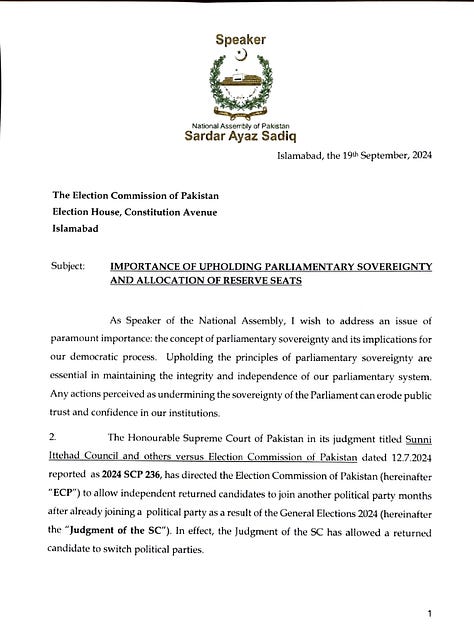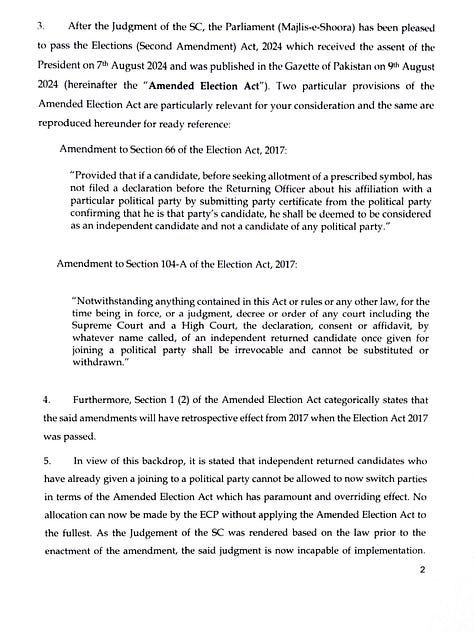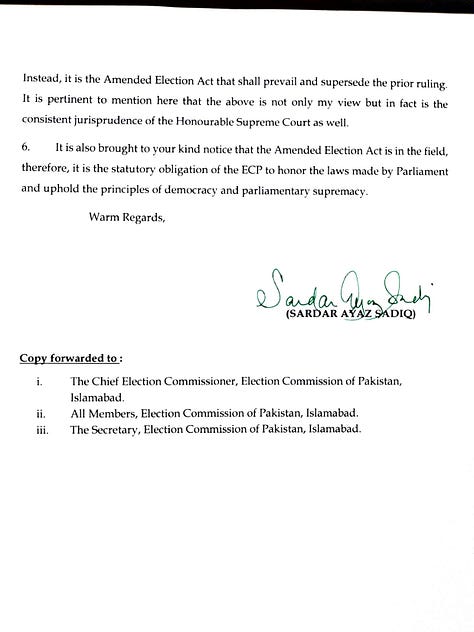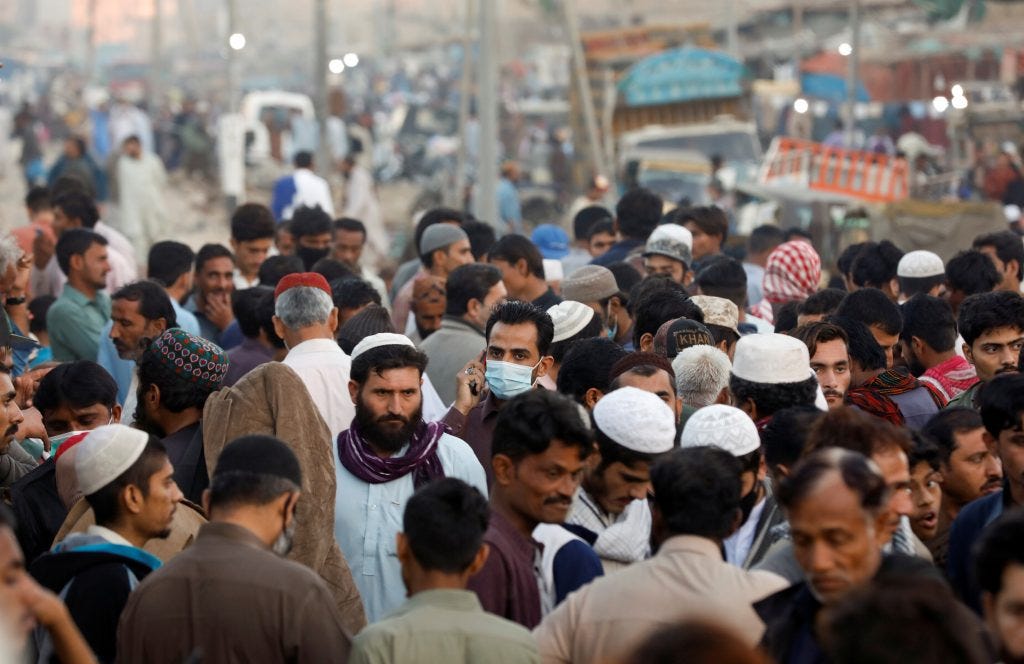Pakistan's future (final part): The Who Knows Future
Who knows who would wield how much power in what circumstances in Pakistan in a timeframe that spans a week to the next 3, 4, or 5 years?
Muhammad Amir, Pakistan’s controversial but hugely-talented fast bowler, spoke a line in one of the interviews in the middle of our chaotic and eventually fruitless ODI World Cup pursuit. After giving the usual superior maths that we are used to deploying to somehow shore up our chances of success amidst dwindling hopes and sinking statistics, the left-arm speedster said something like this: If this happens, and that doesn’t, and if the weather also plays to our advantage who knows? Meaning who knows that we could squeeze our way past self-inflicted challenges and make it to the semis.
This sums up the letter and the spirit of the 5th possible future that Pakistan can have: Who Knows Future. What it says is this: where the country stands today, with multiple pressure points developing all around and all political actors battling out with every passing day, anything, many things, some things and even nothing can happen. It might sound like an outrageously nebulous and confounding statement but frankly, that’s how the political wheel is spinning at present. The wheel is not going round and round, but round and reverse, halt, then half-way forward, then back while slanting sideways. This is how unpredictable the power equation has become. This is how fast the fundamentals shaping the country’s future are changing. Anyone who is telling you otherwise is fooling you.
Read the previous articles in this series:
If you are looking for more convincing material to relate to the Who Knows Future’s construct, jog your memory back to the 12th July judgment of 8 judges. The G8 practically conjured up the PTI as a party in the parliament. They also dissipated the Sunni Ittehad Council, which had these members in its fold, by saying all those who had suggested at any point in time that they were PTI representatives should leave SIC and go to their original party. Then it seemed that the G8 had finally got this government and the Establishment by the throat. That they had choked their big dreams of using the Independent Members of the parliament to pass constitutional amendments that would regulate the judges’ assumed power to dictate terms to the parliament. There was much rejoicing in the PTI camp and many sang requiems for the Shehbaz Sharif government. Again, on the eve of the government’s attempt to pass the 26th constitutional amendment, G8 reinforced their earlier order. They told the Election Commission to pack the PTI’s parliamentary party (which they had created out of nowhere through the first order) with even those members of the parliament who had never given any affidavit of party affiliation. When the 26th amendment became stillborn, the core reason was that the judges had scuttled all calculations that were based on the votes of some independent members. The G8 had won again, leaving the government and the Establishment with a sunny-side-up egg on the face. Hopes soared that with Chief Justice Qazi Faez Isa on his way out in under two months and Justice SMASH (Syed Mansoor Ali Shah) taking the helm, all the tables will be turned. Imran will come out of jail, Bushra will go back to husbanding supernatural forces and the Establishment’s power base will be torn to bits by the hammer of the White Huns in robes.
But wait! Where are we now? At exactly the opposite point of this situation. In a week, the PTI disappeared from the parliament as a party because the Speaker of the National Assembly citing the amended Election Act has dictated that those who joined a group or a party in the parliament or before contesting elections declared their status as independents cannot switch sides.



Now there are 41 members available in the parliament who can potentially help the government to amend the constitution. The pathway to challenge the Speaker’s ruling in the Supreme Court is now very tight. The judicial committee that decided the formation of benches which then decided the outcome of political cases now is under the chief justice’s decisive influence. For 90 days the presidentially-approved ordinance has allowed him to pick any senior judge from the pack and form benches that don’t reflect the overbearing weight of the G8. The ordinance does several other things as well that eventually deflates great expectations that the PTI is unstoppable and so is the collapse of the Shehbaz government because a judicial tsunami is on its way. If anything, the tsunami seems to have reversed quickly and is likely to make landfall on the G8. The Chief Justice has asked some very tough and awkward questions of the Registrar of the Court about the second order of the G8 that bypassed all standard procedures and simply landed on the official website of the Court.
So two months ago, G8 plus PTI plus JUI plus their international backers were winning a decisive victory against the government and the Establishment. During the last week, the battle fortunes have changed. Those in the chase, are now on the run. Those on the ropes, now rule the roost. This is Pakistan’s power dynamics for you. They turn and twist, change, and get rearranged faster than you can say Holy Scrap! Therefore, who knows what might happen in the next week? Or the week after? Or the week after that? What new marvel might unfold banishing the effects of the last one only to meet the same fate itself at the hands of another turn of events? Who knows how the economy will perform in the next quarter? Who knows if there will be a constitutional court or not? Who knows if the army chief will stay another three years or not? Or who will be the next ISI chief? Or the present one will stick around? Who knows how G8 will react to the clipping of their overgrown wings? How Imran’s final fate will pan out? Or Amin Gandapur’s next act of disgrace be? Or at what scale terrorism will rise or decline? Or the Taliban’s mood and mode? Or India’s Occupied Kashmir experiment’s consequences be?
Who knows who would wield how much power in what circumstances in Pakistan in a timeframe that spans a week to the next 3, 4, or 5 years? Even the most well-informed don’t know. They may pose otherwise but they don’t. Unfortunately, of all the five future scenarios for Pakistan, this seems the most likely to prevail. But then, who knows?





